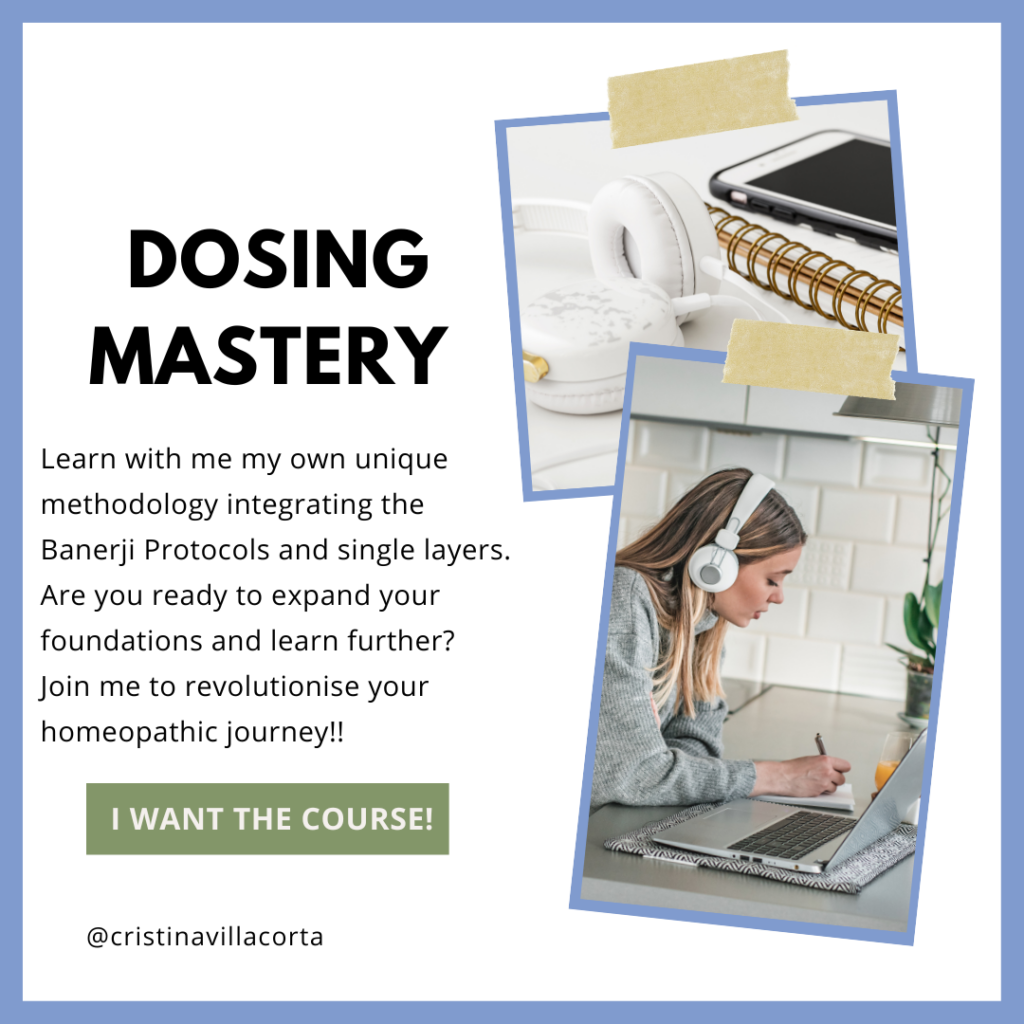The Banerji Protocols, are they Homeopathic, You May Ask? I am a homeopath, and I use the Banerji Protocols in my practice every day.
I love them.
They are my most useful tool and are also a dear possession of my family.
I have very classical training, which is how I started practising in my clinic. I was never taught about the Banerji Protocols or heard anyone talking about them during my training as a homeopath. I attended two different schools of homeopathy in the UK!
Before meeting Dr Prasanta Banerji in London, I have to say that I did not know much about them. I was looking to understand more and more about the therapeutic use of remedies as my classical training was not producing the consistent results I expected in my practice. That is why I started to study further to improve my practice through different methodologies.
MEETING THE BANERJIES
Meeting Dr Prasanta Banerji was an unforgettable experience that transformed my practice and how I viewed homeopathy.
Dr Prasanta Banerji was the kindest homeopath and person I had ever met, and despite his success, he remained a very humble man. His diagnostic skills and knowledge of remedies and diseases were impressive.
The data collection of all of his research cases was astonishing, and he showed us proof of his success with multiple cases presented with clinical evidence and the progression of his patients, so we could see how his methodology worked.
I have never seen such a detailed account of cases with medical records to contrast the patients’ progress one after another. Yet, he kept producing them easily; this was only a very small sample of the massive amounts of data and cases he held.
Back home, I could not stop thinking about what I had learned and was impressed by the success rates. I started to think that this was what I was missing, precisely what I was looking for. From that day, the Banerji Protocols were introduced in my practice, and I have never looked back.
They deliver case after case, and I could not do without them.
My family loves the Banerji Protocols; my patients love the protocols because they see results.
ARE THE PROTOCOLS AN ESTABLISHED METHODOLOGY, OR ARE THEY NEW TO HOMEOPATHY?
Having worked with the Banerji Protocols for many years, they never cease to teach me something new every day. These Protocols, with a deep understanding of homeopathy and its intricate remedy relationships, reflect the depth of the wisdom they encompass.
Over the years, they have not only deepened my knowledge of disease processes and the underlying mechanisms that make homeopathic remedies effective, but they have also broadened my understanding of homeopathy itself, surpassing any prior training I have undergone (not to undermine the importance of conventional homeopathic education; it remains important for anyone aspiring to become a proficient homeopath).
They tie everything together and help me to make sense of things left unexplained in my training.
What I have learned from the Banerji Protocols extends far beyond the boundaries of conventional teachings. Homeopathy, as understood by many in our profession, remains firmly rooted in the paradigms established two centuries ago by its founder, Samuel Hahnemann. While innovative in their time, these teachings were only the stepping stones that needed further refinement in light of the progress that science and clinical practice have achieved.
The conventional framework of understanding homeopathy, as it was established two centuries ago, is presented as incomplete. It fails to incorporate the numerous advancements that homeopathy has made over time. The interpretations of remedy reactions, including provings and aggravations, which persist in present teaching, are inherently flawed due to their reliance on those principles established during homeopathy’s beginnings, disregarding the invaluable contributions from homeopathic clinical practice until present times.
These misinterpretations are not more than a simple unfolding of the case and movement through layers. With a sound methodology like the Banerjies, they become nullified.
It is not that the core theory we teach is fundamentally wrong, but rather the interpretation of this theory is outdated, failing to accommodate the understanding we now possess concerning the clinical application of homeopathy and its alignment with quantum mechanics.
It is important to acknowledge that I am not pioneering this perspective. Homeopaths of the past, such as Francisco Eizayaga and Burnett, have laid the foundations for this methodology. Eizayaga, in particular, was the first in the articulation of the concept of layers within homeopathy, changing our understanding of what remedies target within these layers.
Burnett, on the other hand, introduced the concept of organopathy, an approach that effectively treated numerous diseases where others had failed. Remarkably, this approach resembles the Banerji Protocols.
I find a lot of similarities between Burnett’s work and the Banerji Protocols, as they both emphasize the importance of addressing both the individual and the affected organ to achieve good results. Much like Burnett, the Banerji Protocols target both pathology and deeper aspects of the condition, allowing for a prescription that could be likened to a “constitutional” approach or from my own perspective, addressing different parts within the intricate hologram that we can only partially perceive.
In sum, the Banerji Protocols represent wisdom and innovation within homeopathy, incorporating a structured system of homeopathic prescribing that harmonizes the old and the new, the traditional and the modern, to create a profound and dynamic approach to healing.
MYTHS ABOUT THE BANERJI PROTOCOLS
As I scrolled through the internet, I became horrified to see the misinformation that was populating homeopathic groups about the Banerji Protocols and their use.
But most importantly, the myths that were formed about them.
So my intention here is to set things straight for those who are looking to improve their health with homeopathy but are wary of using the Banerji Protocols because of what they may read online.
I want to dispel some circulating myths about this methodology in homeopathy and encourage everyone to use them, including homeopaths.
Nevertheless, the Banerji Protocols are part of a process that needs to be monitored for changes and adjustments like any other homeopathic methodology.
The protocols’ effectiveness depends on factors such as the correct diagnosis, correct dosing, constitution, existence of other health problems, and a good understanding of the case in terms of what is happening in the disease process.
The Banerjies themselves follow up on the cases to assess progress. Other remedies are added to the lines if needed, so although the protocols are fixed, the case needs to be reviewed at intervals.
The Banerji Protocols is a methodology that needs to be understood to give the best results. Using the Banerji Protocols are best when used under the supervision of a homeopath for chronic conditions or complex cases.
#MYTH 1-BANERJI PROTOCOLS ARE NOT HOMEOPATHIC BECAUSE THEY ARE NOT INDIVIDUAL TO THE PERSON
I am afraid to say that in order for this to be true, we would need to discard all of the clinical experience in homeopathy for the past 200 years because our understanding of our Materia Medica is based on diseases not on individual people.
To know a homeopathic remedy, you really need to understand the disease process and through that, you can understand the affinities of the remedy in question so you know what tissues and organs the remedy is targeting.
That is why homeopaths suggest Arnica for a bruise, Ledum for puncture wounds and Belladonna for high fevers because we know that it works by clinical experience and an understanding of the Materia Medica. We are not looking at you as a person when we prescribe them -we are looking at the disease process.
Another example is the use of Thuja as a detox before or after receiving vaccines. This is often suggested by classical homeopaths in conjunction with Ledum + Arnica to counteract or prevent any side effects.
These are not individualised remedies, yet this is a homeopathic prescription, and to be honest, every single homeopath has prescribed Arnica on that basis more than any other remedy.
Also, let’s be honest here.
There are about 3000 known homeopathic remedies in our Materia Medica, but in our practice, we may only know about 5% of those remedies by recognition. The rest, may not even be found in our repertory or are not known to us and some remedies have not been discovered still.
So how true is it that when you go and see a homeopath, they are individualising “the remedy” by finding the unique remedy that fits your case?
The truth is that although we may call the remedy a “totality”, it is only covering a partial aspect of the case, it is never a true similimum. We can only prescribe partial pictures with our perception of the case.
Our cases are like holograms; that is why everyone can see a different face depending on which angle they are looking at it.
That is why when you go to see different homeopaths, they would prescribe different totality remedies, as all of them are prescribing with their own understanding of the case, depending on what they can see.
The Banerji Protocols are another way of looking at a case in homeopathy.
They are not individualised to the person but to the disease by looking at what body systems are affected.
They are homeopathic, no doubt about it.
#MYTH 2 -IF YOU UNDERSTAND HOW HOMEOPATHY WORKS, YOU CAN BEGIN TO CLEARLY SEE WHY PROTOCOLS ARE NOT TRULY HOMEOPATHIC EVEN THOUGH THEY USE HOMEOPATHIC REMEDIES.
This one is an interesting myth because nobody can fully explain how homeopathy works, so this myth does not really make sense.
Talking about the tenets of homeopathy is really hypothesising a set of ideas, as in order to set clear boundaries, one needs to be able to work out the mechanism of action to set parameters.
We know that homeopathy works because millions of patients can testify of the improvement in their health, but we do not really know the mechanism of action, and maybe there are things in science that we may never discover.
The closer of my personal understanding of homeopathy is in relation to Quantum theory and the hidden variables proposed by David Bohm. Even though, this stands only as a theory, similar to how quantum mechanics still is in an infant stage and not much of it is really understood.
However, if there is something that Quantum theory suggests, it is that reality isn’t objective. So the rules that we think may apply to homeopathy, are part of a reality that we have constructed with the limited understanding that we have about it.
So if we can not determine the framework of Quantum theory, how can we assume that we can establish principles in homeopathy? We need to remember that homeopathy is based on energy principles itself.
If we can not establish principles, how can we say that the Banerji Protocols are not homeopathic based on those principles?
It just does not make sense.
#MYTH 3- THE PROTOCOLS ARE NOT CONSTITUTIONAL TREATMENT, IT IS A WAY TO TREAT CHRONIC DISEASE AS ACUTE DISEASE.
This is absolutely false.
The Banerjies do treat very complex chronic diseases that have a high mortality rate and are considered incurable with conventional medicine with excellent rates of success.
These cases are followed up for years when possible, and the people are found still in good health without recurrence of the symptoms.
Anyone who understands the homeopatic treatment of chronic disease would realise that this is not possible by just acute localised treatment.
The Banerji Protocols must resonate with the patient at some level to be able to do that, so they act as constitutional -whatever that may mean- or raise the whole state of health for the patient, even though they are prescribed in a different way.
Read here my own take on how they may work.
#MYTH 4- THE USE OF A REMEDY TOO MUCH CAN CAUSE AGGRAVATIONS AND PROVINGS WITH THE BANERJI PROTOCOLS
If you have heard about homeopathic aggravations, then you will be happy to hear that they are nearly non-existent with the Banerji Protocols.
This is thank you to their clever system of repetition when the pace of the remedy is designed to counteract the first initial action of the remedy.
This is actually cleverly put together, but it is not totally new to homeopathy as such, old and new homeopathic prescribers partially used this system of fast repetition.
Let’s look at a couple of examples:
A) Ascending doses which are a series of consecutive ascending potencies of the same remedy, has always had a reputation of being more gentle for that same reason.
The quick succession of remedies would stimulate the organism, but the next higher potency would check the initial push making their action less steep at the beginning. This is a problem often found in classical prescribing, and that is why some may prefer to use them when prescribing high potencies.
B) More recent methodologies use the technique of fast repetition to check the action of a dose that is too intense.
For instance, when using detox methodologies and the primary action of the remedy is too strong, it is advised to make a liquid dose of the same remedy that was taken and give it several times during the day to check its action.
The clever way that the BP repeat the remedies, make this methodology one of the gentlest in homeopathic prescribing. But don’t take my word for it! There are other pioneer homeopaths who also realised the value of changing remedies rather than changing potencies.
Burnett ( 1840-1901) found by clinical experience that zigzagging through remedies in complex cases produced much better results. Hence he would use a remedy like Thuja and follow it up with Sabina and later with Cupressus Lawsoniana. Even when Thuja was acting, he would switch to a complementary remedy to navigate through the case.
My clinical experience corroborates the same, although sometimes I will use different strategies, including increasing potency, especially for a single fundamental layer.
Do you see why the strategy that the Banerjies use, changing lines rather than going up in potency when a protocol stops acting or has halted the progression, is also a good strategy? You need to think that the Banerjies treat complex pathology; hence they need not burden the organism and find a gentle laddering of remedies if required.
The Banerji Protocols are a clever piece of art that, sadly, few can understand in our homoeopathic history. Each protocol and line on disease has a very clever combination of remedies with a fantastic strategy behind them.
#MYTH 5- THE PROTOCOLS ARE SUPPRESSIVE
The topic of suppression is very debated within the homeopathic community, and homeopaths hold different views about it.
In order to understand this myth, I think it is important to understand what suppression really means. And the definition of suppression is : the act of preventing something from being seen or expressed or from operating. The act of ending something by force.
In my view and experience, homeopathic remedies are never suppressive. They move energy from one place to another- energy is never created or destroyed, only transformed. By applying deductive logic, homeopathic remedies- including those in the Banerji Protocols- are not suppressive as they only produce a movement of energy. The expression of that energy will move from one place or another but will not remain stuck- suppressed-unexpressed. In contrast to suppression, homeopathic remedies facilitate expression.
If we are basing this myth of suppression on the fact that the Banerji Protocols are not prescribed on a totality prescription- or a constitutional remedy- as others may call it, then I am sorry to disappoint those readers who are taking constitutional prescriptions by reading the following:
NOBODY is ever given a remedy based on a full totality because we can only see partial images in a case; that is why 20 different homeopaths can give 20 different constitutional remedies because they can only all see a few small pieces of the colossal puzzle.
We can only prescribe on the partial image that we see, and this is the called “constitutional remedy” which is, in reality a partial remedy. So if this myth was to be true, all remedies given, even through classical prescribing, would have to be considered suppressive.
IBut as some people may say -the proof is in the pudding- and we only need to see the number of patients that passed through the Banerji Clinic through the years to realise that the patients still enjoy good health.
And I can verify that with my own patients, short-term and long-term.
The Banerji Protocols have the same healing potential as any other methodology in homeopathy with the same positive results.
LET’S DEBUNK THE SINGLE RIGHT REMEDY AND LEARN FROM THE WORK OF THE BANERJIES
I am sure you must be confused reading this post as many of you may have read online or been taught either in courses or in your homeopathic training – the single remedy approach, give a couple of doses and wait-as the only way to prescribe homeopathy. As a single remedy approach.
But although homeopathic schools are still teaching this today, forming part of our selective training, they are leaving behind a significant part of homoeopathy. Hahnemann himself was not opposed to using two remedies at a time.
Dr Pratip told the Spanish Medical community that it was not his grandad who had invented the combinations; Julius Aegidi’s letters proved that Hahnemann knew about using two remedies at a time, and he saw the benefit.
However -for political reasons- it became more convenient to retract it as the community warned him of falling into the wrong hands and using it as polypharmacy. He even wrote a paragraph for the 5th edition of the Organon welcoming the combination of remedies before deciding to reject it.
Yet, if we analyse some of these latest cases in Paris, we can see that he used remedies fairly closely together, one after the other. Sometimes, within hours before the action of the remedy had ceased ( but of course, in his mind, he was not using them in combination!).
Have a read through this great article to find out more!
SOME FINAL THOUGHTS
I hope to have been able to explain clearly and in a simple way how the Banerji Protocols are an important part of homeopathy.
Although they are prescribed in a different way, they are truly homeopathic and very effective.
I should finish with a quote from one of my favourite physicists of all time, David Bohm:
“The notions that all of these fragments are separately existent is evidently an illusion, and this illusion can not do other than lead to endless conflict and confusion.”
Let us fully embrace the principles of homeopathy, including the Banerji Protocols, which contribute to our understanding of this effective method of healing. It is important to acknowledge and give due respect to these protocols for the valuable contributions they make.






